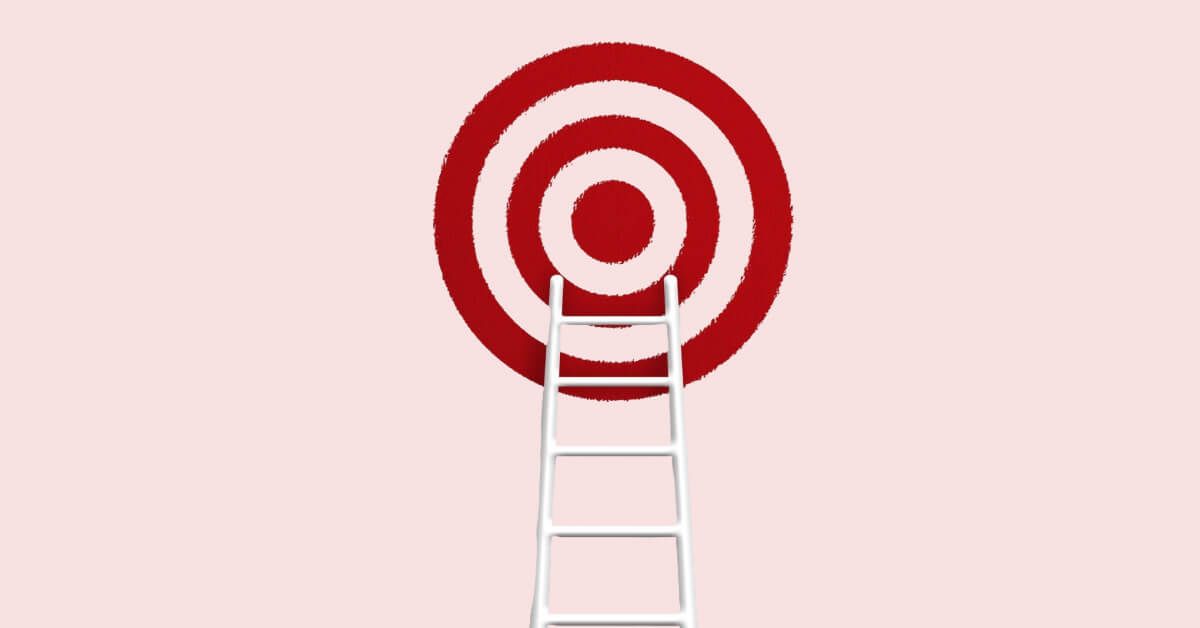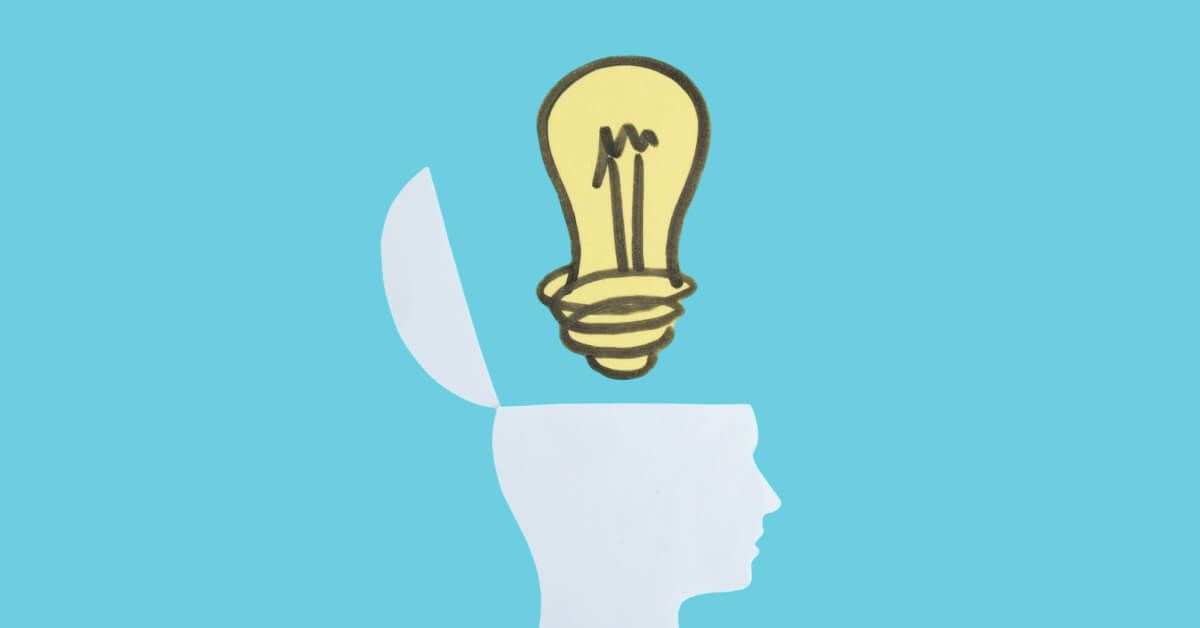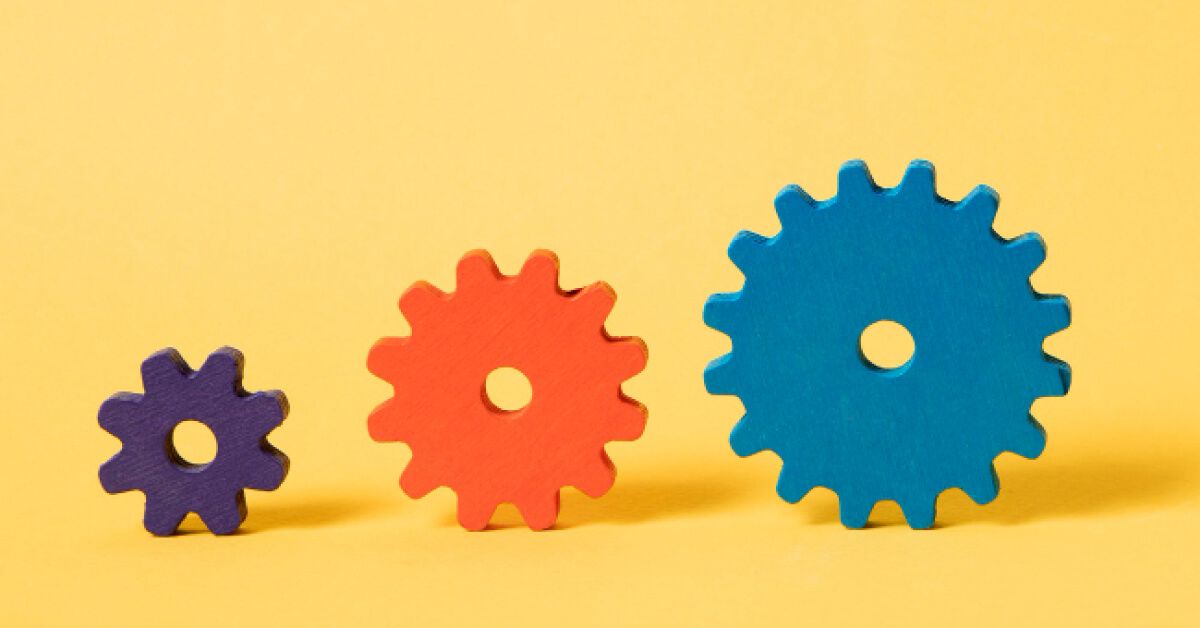What is an employee reward program: 45+ Examples and best practices to try in 2025

Admit it, you've dreamt of being showered with gold coins for a job well done.
While Scrooge McDuck-style vaults might not be in the budget, employee reward programs are the next best thing. They're not just about handing out fancy trinkets (though, hey, those can be fun too). Well-designed incentive programs really are like a superhero's utility belt – they boost morale, fight off low engagement, and keep your team feeling valued.
But where do you even begin? Fear not, intrepid HR professional or curious employee! This blog is your one-stop shop for all things reward programs. We'll crack open the treasure chest of knowledge, revealing what makes a program shine and offering over 20 creative ideas to get you started.
From virtual reality experiences to nacho cheese fountain office parties (yes, you read that right), we've got something to fire up even the most jaded employee. So, grab your metaphorical shovel, and let's dig into the goldmine of employee motivation!
TL;DR
What is an employee reward program?

TL;DR
An employee reward program is a structured system that recognizes and rewards employee performance and achievements. It includes monetary and non-monetary rewards like bonuses, recognition, or career growth.
When personalized and transparent, these programs boost morale, increase retention, and align employee goals with company objectives, ultimately fostering motivation, collaboration, and long-term organizational success.
An employee reward program is a structured system designed by organizations to recognize and reward employees for their performance, achievements, and contributions to the company. These programs aim to motivate employees, enhance job satisfaction, and foster a positive work environment.
Rewards can be monetary, such as bonuses, raises, and stock options, or non-monetary, like extra vacation days, public recognition, awards, and professional development opportunities. By acknowledging employees' hard work and dedication, companies can improve employee retention, reduce turnover, and increase overall productivity.
Implementing an effective employee reward program involves understanding what motivates employees and aligning rewards with their preferences and needs. It also requires setting clear criteria for performance evaluation and ensuring transparency in the reward process.
Regular feedback and communication are vital for maintaining credibility and impact in employee reward programs. When tailored to individual or team achievements, they encourage both personal growth and collaboration. A well-designed program boosts morale while aligning employee goals with business objectives, driving long-term success.
Employee rewards vs employee recognition

While often used interchangeably, employee rewards and recognition serve distinct purposes—both essential to building a motivated and engaged workforce.
| Aspect | Employee rewards | Employee recognition |
|---|---|---|
| Purpose | Offers tangible incentives for achieving specific goals or milestones | Acknowledges effort, behavior, or contributions regardless of outcome |
| Form | Often monetary or material (bonuses, gifts, vouchers) — part of employee rewards programs examples | Usually non-monetary, like public praise or thank-you notes |
| Timing | Given after performance milestones or targets are met | Can happen anytime, often immediately after positive actions |
| Frequency | Less frequent, based on achievements or program cycles (staff rewards program) | Ongoing and regular to encourage a culture of appreciation |
| Impact | Drives performance through goal alignment (employee rewards programs) | Boosts morale, engagement, and emotional connection to the workplace |
What is the purpose of an employee rewards program?

An employee rewards program isn’t just about giving perks—it’s a strategic tool to boost motivation, retention, and performance. Here's what it aims to achieve:
- Motivates employees: Recognizes hard work and encourages employees to maintain high performance levels.
- Boosts job satisfaction: Helps employees feel valued, appreciated, and more engaged at work.
- Improves retention: Reduces turnover by making employees feel loyal and less likely to seek opportunities elsewhere.
- Strengthens employer branding: Sets the company apart in competitive job markets with attractive reward offerings.
- Drives goal alignment: Encourages employees to focus on business goals, knowing their efforts will be rewarded.
- Promotes a culture of excellence: Inspires continuous improvement and achievement through structured recognition.
- Enhances teamwork and collaboration: Rewards both individual and team contributions to foster unity and shared success.
- Supports long-term growth: Builds a loyal, high-performing workforce that drives sustained organizational success.
45+ Effective ideas for employee rewards and recognition program

Creating a diverse and effective employee rewards and recognition program involves offering a variety of incentives that cater to different employee preferences and motivations. Here are over 45 ideas to inspire your program:
TL;DR
A well-rounded employee rewards and recognition program includes over 45 creative ideas—ranging from monetary bonuses and gift cards to flexible work hours, professional development, and wellness perks.
By combining personalized, public, and team-based recognition, organizations can boost morale, engagement, and retention while celebrating diverse achievements and fostering a positive, motivated workplace culture.
- Monetary bonuses: Cash rewards for exceptional performance or reaching specific targets.
- Gift cards: Vouchers for popular stores, restaurants, or online retailers.
- Extra paid time off: Additional vacation days or personal leave as a reward for hard work.
- Flexible work hours: Allowing employees to choose their work hours or work remotely.
- Professional development: Funding for courses, certifications, or conferences to enhance skills.
- Employee of the month/quarter: Public recognition with a certificate, trophy, or bonus.
- Company swag: Branded merchandise like t-shirts, mugs, or tech gadgets.
- Experience rewards: Tickets to events, concerts, or weekend getaways.
- Wellness programs: Subsidized gym memberships, yoga classes, or wellness retreats.
- Public acknowledgment: Recognizing achievements in company meetings or newsletters.
- Personalized thank-you notes: Handwritten notes from managers expressing appreciation.
- Team celebrations: Organizing team lunches, dinners, or outings for collective achievements.
- Office perks: Upgraded office equipment, parking spots, or preferred seating.
- Spot awards: Instant recognition for small but impactful contributions.
- Peer-to-peer recognition: Platforms where colleagues can recognize each other’s efforts.
- Charitable donations: Making donations to a charity of the employee’s choice.
- Lunch with leadership: Opportunities to have lunch with senior executives or the CEO.
- Career advancement opportunities: Fast-tracking promotions or special projects.
- Learning subscriptions: Access to online learning platforms like Coursera or LinkedIn Learning.
- Milestone celebrations: Recognizing work anniversaries with gifts or parties.
- Employee recognition wall: A dedicated space in the office to showcase employee achievements.
- On-the-spot awards: Immediate recognition with small tokens or gift cards for exemplary work.
- Health and wellness days: Offering extra days off dedicated to mental health and wellness.
- Customized awards: Personalized gifts based on individual interests and hobbies.
- Leadership development programs: Special training programs for future leaders.
- Home office upgrades: Offer ergonomic chairs, better monitors, or noise-canceling headphones—perfect for hybrid or remote teams.
- Pet-friendly days: Let employees bring their pets to work—an instant mood booster and great for morale.
- Subscription perks: Cover monthly services like Spotify, Netflix, or meditation apps like Headspace.
- Custom trophies or plaques: Create unique, branded awards employees can proudly display.
- Recognition tokens system: Let employees collect points they can redeem for rewards of their choice.
- ‘No meeting’ day passes: Offer an occasional meeting-free day as a reward for productivity.
- Workcation options: Let employees work from a scenic location or different city for a week.
- Company shoutouts on LinkedIn: Public recognition from leadership on professional networks.
- Surprise snack drops: Send curated snack boxes to remote workers as a fun thank-you.
- Celebration budget for teams: Allocate funds teams can use to celebrate wins however they choose.
- Innovation spotlight: Recognize the best new idea each month with a feature and reward.
- Skill showcase sessions: Give employees a stage to share hobbies or skills with others.
- Legacy awards: Annual recognition for employees who have had a lasting positive impact.
- Hackathon participation rewards: Recognize those who contribute creative ideas during internal innovation events.
- Mentorship rewards: Acknowledge and reward those who support peer growth through mentoring.
- Green champion awards: Recognize employees who promote sustainability and eco-friendly habits.
- Gamified team challenges: Create healthy competitions with badges, points, and fun rewards.
- Custom thank-you videos: Leadership records and sends personal video messages of appreciation.
- Birthday surprise packages: Celebrate employee birthdays with thoughtful curated gifts.
- Parking privileges: Reserved prime parking for high-performing employees.
- Creative break hour: Offer time during the week for passion projects, hobbies, or ideation.
- Culture ambassador titles: Recognize employees who embody and promote company culture.
- Talent showcase nights: Host fun events where employees can share music, art, or other personal talents.
Types of corporate rewards
Every employee is driven by something different—some thrive on public praise, others on perks or growth. A well-rounded corporate rewards program offers variety to meet those diverse motivations and build long-term loyalty.
- Monetary rewards: These include bonuses, raises, and profit-sharing. They're tangible, motivating, and often expected. Whether it’s a yearly bonus or a project-based incentive, financial rewards remain a cornerstone of most corporate recognition strategies.
- Non-monetary recognition: Public appreciation in town halls, shout-outs in newsletters, or personalized thank-you notes go a long way. Employees often remember a sincere moment of recognition more than a one-time cash bonus.
- Experiential rewards: Think team outings, exclusive event passes, or travel opportunities. These create lasting memories, bonding teams and reinforcing a fun, achievement-driven culture that feels more personal.
- Career development opportunities: Corporate rewards aren’t always about now—they can be about the future. Offering training, mentorship, or conference tickets shows employees you’re investing in their long-term success.
- Wellness and lifestyle perks: Onsite yoga, mental health days, wellness stipends, or flexible working hours show that the company values employees as people, not just professionals. These rewards foster a healthier, happier workplace, especially in today’s hybrid and high-stress work environments.
Individual vs. team reward programs
Striking the right balance between recognizing personal effort and celebrating group achievements is key to building a thriving, motivated workplace. Here’s how individual and team reward programs compare—and why both matter.
| Aspect | Individual reward programs | Team reward programs |
|---|---|---|
| Focus of recognition | Recognizes personal achievements and individual contributions tied to specific goals | Celebrates group performance and collective efforts toward a shared objective |
| Motivation style | Encourages personal excellence and competitive drive | Builds camaraderie and strengthens collaboration across departments or teams |
| Impact on culture | Boosts self-esteem and promotes accountability | Cultivates trust, shared success, and a unified workplace culture |
| Types of rewards | Bonuses, personalized gifts, employee of the month, or one-on-one development opportunities | Team outings, shared bonuses, celebratory events, or group wellness activities |
| Potential drawbacks | May foster competition or feelings of unfairness if not managed well | Can demotivate high-performers if individual efforts are not equally recognized |
| When to use which | Best for highlighting individual excellence and high-performance | Ideal when collaboration and team outcomes are central to success |
Benefits of implementing an employee rewards and recognition program

Implementing an employee rewards and recognition program offers numerous benefits to both employees and the organization. These programs can lead to increased motivation, enhanced job satisfaction, and a more positive work environment. Here are some key benefits:
- Increased employee motivation and productivity: Rewards and recognition programs incentivize employees to work harder and strive for excellence. When employees know their efforts will be acknowledged, they are more likely to go above and beyond in their roles, leading to higher productivity and better performance outcomes.
- Improved employee retention and reduced turnover: Recognizing and rewarding employees for their contributions can significantly reduce turnover rates. Employees who feel appreciated and valued are more likely to stay with the company, reducing the costs and disruptions associated with hiring and training new staff.
- Enhanced job satisfaction and morale: Regular recognition and rewards contribute to a positive workplace atmosphere. When employees feel that their hard work is noticed and appreciated, their job satisfaction and overall morale increase, leading to a more harmonious and motivated workforce.
- Fostering a positive company culture: An effective rewards and recognition program helps build a culture of appreciation and respect. This culture promotes teamwork, collaboration, and a sense of belonging among employees, which can enhance overall organizational cohesion and performance.
- Increased employee engagement: Engaged employees are more committed to their work and the organization's goals. Rewards and recognition programs help employees feel more connected to the company, increasing their engagement and loyalty.
- Attracting top talent: A strong rewards and recognition program can make a company more attractive to potential employees. In a competitive job market, offering robust rewards and an employee recognition platform can be a key differentiator that helps attract high-quality candidates.
- Encouraging continuous improvement: By setting clear criteria for rewards and recognizing achievements, these programs encourage employees to continuously improve their skills and performance. This focus on development benefits both the employees and the organization.
Common mistakes in employee reward programs
Even the best intentions can fall flat if your employee reward program isn’t thoughtfully planned or executed. Here are five common mistakes that can quietly undermine its success.
- Making it all about money: While financial rewards are appreciated, relying solely on them ignores the emotional impact of genuine recognition. A “thank you” in front of peers or a personalized note can often go further than a cash bonus.
- Inconsistent or delayed rewards: When rewards are sporadic or disconnected from the behavior they’re meant to reinforce, the motivational value drops. Timely recognition is key—catch people doing great work and celebrate it immediately.
- One-size-fits-all rewards: Not every employee values the same thing. A Starbucks gift card might thrill one person and mean nothing to another. Without personalization, even well-funded programs can feel hollow or transactional.
- Lack of transparency: If employees don’t understand how rewards are earned—or feel the process is unfair—it can lead to frustration and disengagement. Clear, accessible criteria build trust and foster healthy competition.
- Failing to evolve the program: Employee expectations shift over time. A reward system that worked last year might feel outdated today. Regular feedback and updates ensure your program stays relevant, meaningful, and impactful.
What makes up an employee reward system?
An employee reward system comprises various components designed to recognize and incentivize employees for their contributions to the organization. The key elements of an effective reward system include monetary and non-monetary rewards, clear performance criteria, and a structured process for recognition. Let’s take a look at them.
TL;DR
An effective employee reward system combines monetary incentives like bonuses with non-monetary perks such as flexibility, development, and wellness programs.
It relies on clear, measurable performance criteria and a structured recognition process to ensure fairness and transparency.
- Monetary rewards are tangible financial incentives such as bonuses, salary increases, phantom stock plans, and profit-sharing plans. These rewards directly enhance an employee's financial well-being and serve as a powerful motivator for achieving specific performance targets or milestones.
- Non-monetary rewards encompass a wide range of benefits that contribute to an employee’s overall job satisfaction and work-life balance. These can include extra vacation days, flexible work schedules, professional development opportunities, health and wellness programs, and recognition awards such as Employee of the Month. These rewards often significantly impact employee morale and loyalty.
- Clear performance criteria are essential for a transparent and fair reward system. Establishing specific, measurable, achievable, relevant, and time-bound (SMART) goals helps employees understand what is expected of them and how they can achieve rewards. This clarity ensures that the reward system is perceived as equitable and merit-based.
- A structured recognition process involves regular and systematic acknowledgment of employees' efforts and achievements. This can be done through formal events, public announcements, or personalized appreciation notes. Consistent recognition fosters a culture of appreciation and motivates employees to maintain high-performance levels.
Remote and hybrid teams: Digital‑first rewards that stick
Keeping remote and hybrid teams motivated isn’t about grand gestures—it’s about thoughtful, digital-first rewards that feel timely, personal, and truly appreciated.
- E-gift cards with a personal touch: A generic voucher? Meh. But a well-timed e-gift card to their favorite coffee shop with a note that says, “For powering through that deadline—thank you,” feels meaningful and direct.
- Subscription perks for everyday joy: From Spotify to Headspace or even a meditation app, digital subscriptions help employees feel seen beyond work. These perks boost daily happiness and show you care about their well-being—wherever they are.
- Virtual experiences that engage: Team cocktail classes, cooking demos, or trivia nights via Zoom bring remote folks together in a relaxed, fun way. Bonus: shared laughter builds better collaboration than another “urgent” Slack thread.
- Points-based reward systems: Let remote employees earn and redeem points in a digital platform. Whether it’s for project wins or peer shoutouts, the autonomy to choose their own reward adds an empowering layer.
- Recognition on digital channels: Highlight wins in company newsletters, Slack channels, or virtual town halls. A simple, public nod in the right digital space reminds hybrid workers that out of sight doesn’t mean out of mind.
9 Steps to design a successful corporate rewards program

Designing a successful corporate rewards program involves a systematic approach to ensure it aligns with the organization’s goals and effectively motivates employees. Here are nine essential steps to create a successful program:
TL;DR
Designing a corporate rewards program involves defining goals, understanding employee preferences, setting clear criteria, and developing a sustainable budget.
It requires selecting meaningful rewards, establishing a structured recognition process, communicating effectively, and continuously monitoring and refining the program.
- Define objectives and goals: Start by clearly defining the objectives of the rewards program. Determine what you aim to achieve, such as increasing productivity, improving employee retention, enhancing job satisfaction, or fostering a positive company culture.
- Understand employee needs and preferences: Conduct surveys, focus groups, or interviews to understand what types of rewards and recognition are most meaningful to your employees. This ensures the program resonates with them and effectively motivates their performance.
- Set clear and measurable criteria: Establish specific, measurable criteria for earning rewards. Ensure these criteria are aligned with organizational goals and are transparent so employees understand what is required to achieve rewards.
- Develop a budget: Determine the financial resources available for the rewards program. Consider both the monetary reward and non-monetary rewards and ensure the budget is sufficient to sustain the program long-term without compromising its effectiveness.
- Choose appropriate rewards: Based on employee feedback and budget considerations, select a mix of rewards. Include a variety of options such as bonuses, gift cards, extra time off, professional development opportunities, social recognition, and public recognition.
- Design a recognition process: Create a structured process for recognizing employees. Decide on the frequency of recognition (e.g., monthly, quarterly) and the methods (e.g., company meetings, newsletters, personalized notes). Ensure the process is consistent and inclusive.
- Communicate the program: Launch the program with clear and enthusiastic communication. Explain the program's objectives, criteria, and rewards through multiple channels such as emails, intranet, team meetings, and posters. Ensure all employees are aware and understand the program.
- Implement and monitor: Roll out the program and monitor its progress. Track participation rates, employee feedback, and the achievement of performance metrics. Use this data to assess the program’s impact on employee motivation and organizational goals.
- Evaluate and revise: Regularly evaluate the effectiveness of the rewards program. Gather feedback from employees and managers to identify areas for improvement. Make necessary adjustments to the rewards platform to keep the program relevant, motivating, and aligned with evolving organizational objectives.
How to create an employee workplace rewards program?
Building a meaningful rewards program for employees isn't about ticking boxes—it’s about showing genuine appreciation in ways that matter to your team.
- Start with what your team values most: Don’t assume what employees want—ask them. Whether it’s flexibility, public recognition, or small surprises, your rewards program for employees should reflect their preferences and motivations.
- Set clear, fair criteria for rewards: Ambiguity kills motivation. Be transparent about how rewards are earned—performance benchmarks, peer nominations, or participation milestones—to make the program feel achievable and inclusive.
- Mix in tangible and intangible rewards: Go beyond salary bumps. Think employee appreciation gifts, extra time off, or mentorship sessions. A good mix of both emotional and practical rewards keeps morale high.
- Celebrate consistently, not just annually: While Employee Appreciation Day is a great start, gratitude shouldn’t be limited to one calendar event. Make appreciation a regular part of your culture.
- Empower managers to recognize wins: Train team leads to notice and reward everyday achievements. Recognition coming from managers adds depth and authenticity to the program.
- Track effectiveness and adjust over time: Use employee feedback and participation data to refine your approach. A rewards program should evolve as your team grows and changes.
Role of employee rewards survey questions in understanding needs

Understanding what truly motivates your employees starts with asking the right questions—surveying their preferences helps you build a corporate rewards program that feels personal, purposeful, and impactful.
- Reveals what rewards actually matter: Survey responses shed light on whether employees prefer appreciation gifts for employees, bonus structures, or time off. Instead of guessing, you gain real data to tailor the perfect employee loyalty program.
- Supports personalized recognition: Not everyone is motivated by the same thing. Some prefer experiential employee gift ideas while others appreciate public recognition. Surveys help you curate gift ideas for coworkers that resonate with different personalities.
- Improves program participation and satisfaction: When rewards match preferences, participation in your corporate reward program increases. Employees feel seen and heard, making them more likely to engage with your incentives and share honest feedback.
- Informs budget-friendly yet meaningful rewards: Survey insights allow you to balance budgets and impact. With the right employee rewards software, you can offer high-value rewards—like flexible hours or digital gifts—without overspending.
- Guides future program strategy: Ongoing surveys help you adapt your corporate rewards program over time. Trends shift, new employee needs emerge, and continuous feedback ensures your program stays fresh and relevant.
- Fosters a culture of appreciation: By regularly asking what matters to employees, you build a work culture where appreciation is proactive, not reactive. Recognition becomes consistent, fueling loyalty and boosting retention organically.
How to measure the success of your employee rewards program?

Measuring the success of an employee rewards program is essential to ensure its effectiveness in achieving organizational objectives and motivating employees. Here are a few key metrics and approaches to consider when evaluating the success of your program:
- Employee engagement surveys: Conduct regular surveys to gauge employee satisfaction, motivation, and engagement levels. Include questions specifically related to the rewards program to assess its impact on employee morale and motivation.
- Participation rates: Measure the percentage of eligible employees who actively participate in the rewards program. Low participation rates may indicate a lack of awareness or perceived value in the rewards offered.
- Retention rates: Track employee turnover rates before and after implementing the rewards program. A decrease in turnover or improved retention rates can indicate that employees feel valued and are more likely to stay with the company.
- Performance metrics: Analyze key performance indicators (KPIs) such as productivity, sales figures, customer satisfaction scores, and quality metrics. Determine if there is a correlation between improved performance and the implementation of the rewards program.
- Feedback and suggestions: Solicit feedback from employees about their experiences with the rewards program. Consider conducting focus groups or interviews to gather more in-depth insights into employee experience, what aspects of the program are working well, and where improvements can be made.
- Cost-benefit analysis: Evaluate the costs associated with running the rewards program against the benefits gained. Calculate the return on investment (ROI) by comparing the financial impact of the program (e.g., increased productivity, reduced turnover costs) to the cost of implementing and maintaining it.
- Long-term impact: Assess the long-term impact of the rewards program on organizational culture, employee morale, and performance. Look for sustained improvements over time rather than short-term gains.
- Benchmarking: Compare your rewards program against industry benchmarks and best practices. Benchmarking allows you to identify areas where your program excels and areas for improvement compared to similar organizations.
- Manager feedback: Gather feedback from managers and team leaders about their observations regarding employee motivation, morale, and performance. Managers can provide valuable insights into the program's effectiveness at the team level.
25+ Employee rewards survey questions to ask in 2025

Here are 25+ employee rewards survey questions tailored for 2025:
TL;DR
These 25+ employee rewards survey questions help organizations gather meaningful feedback about recognition preferences, program fairness, communication, motivation, and overall satisfaction.
By addressing both individual and team perspectives, they guide improvements to the employee rewards system and ensure the rewards program stays inclusive, relevant, and aligned with employee needs.
- How satisfied are you with the current employee rewards and recognition program?
- Do you feel that the rewards offered align with your preferences and motivations?
- How often do you feel recognized for your contributions at work?
- Have you received any rewards or recognition in the past six months? If yes, please specify.
- On a scale of 1 to 10, how valued do you feel by the organization?
- Do you believe the rewards program has a positive impact on employee morale and motivation?
- How clear are the criteria for earning rewards in the program?
- Do you have any suggestions for improving the current rewards program?
- How likely are you to recommend the organization to others based on its rewards and recognition practices?
- Would you prefer more frequent, smaller rewards or less frequent, larger rewards?
- How important is personalized recognition to you?
- Are there any specific achievements or milestones you believe should be recognized but currently aren't?
- Do you feel that the rewards program is inclusive and fair for all employees?
- How effective do you think the communication about the rewards program is within the organization?
- How satisfied are you with the variety of rewards offered by the program?
- Do you believe the rewards program contributes to a positive work culture?
- How well do you believe the rewards program supports the organization's values and goals?
- What additional benefits or rewards would you like to see added to the program?
- How easy is it to provide feedback or suggestions about the rewards program?
- What type of rewards (monetary, non-monetary, experiences) do you find most meaningful?
- Do you feel peer-to-peer recognition is encouraged and valued within the organization?
- Have you ever felt overlooked in the current employee rewards system?
- Are team-based rewards motivating to you, or do you prefer individual recognition?
- How motivated are you to perform better because of the rewards program?
- Do the current rewards reflect your contributions accurately and fairly?
- Would digital rewards (e.g., subscriptions, e-gift cards) be appealing to you?
- How likely are you to engage more if the rewards program were updated based on employee feedback?
7 Employee rewards programs examples to get inspiration from

Here are seven examples of employee rewards programs that can inspire your organization:
- Google's peer recognition program: Google encourages employees to recognize their peers through a program called "Peer Bonuses." Employees can nominate colleagues for exceptional contributions, and if approved by management, recipients receive a monetary bonus.
- Salesforce's V2MOM awards: Salesforce uses a unique approach called V2MOM (Vision, Values, Methods, Obstacles, Measures) to align employee goals with company objectives. They recognize employees who embody these values through the V2MOM Awards, which include cash prizes and trips.
- Adobe's bravo awards: Adobe's Bravo Awards program allows employees to nominate colleagues for demonstrating company values and going above and beyond their roles. Recipients receive monetary rewards and recognition from senior leaders.
- HubSpot's culture code awards: HubSpot's Culture Code Awards celebrate employees who embody the company's culture code. Nominations are open to all employees, and winners receive cash prizes, trips, and other perks.
- Zappos' WOW recognition program: Zappos' WOW Recognition Program encourages employees to recognize exceptional customer service by peers. Recipients receive reward points, which can be used rewards points or redeemed for merchandise or experiences.
- Microsoft's achievement awards: Microsoft's Achievement Awards program recognizes employees who demonstrate excellence in various areas, such as innovation, customer focus, and teamwork. Recipients receive cash prizes and trophies.
- LinkedIn's InDay program: LinkedIn's InDay program allows employees to take a day off to pursue personal interests or work on passion projects. This initiative promotes work-life balance and encourages creativity and innovation.
Conclusion
In conclusion, employee reward systems and recognition programs are indispensable tools for fostering a positive work environment, motivating employees, and driving organizational success.
By offering a mix of monetary and non-monetary incentives, aligning rewards with company values and objectives, and actively seeking employee input through surveys and feedback channels, organizations can create effective programs that boost morale, enhance job satisfaction, and increase employee engagement.
By continuously evaluating and evolving these programs based on employee feedback and performance metrics, organizations can ensure they remain relevant, impactful, and instrumental in retaining top talent and achieving business objectives.
Ultimately, investing in employee rewards and recognition is not only a strategic business decision but also a testament to an organization's commitment to its most valuable asset: its people.
FAQS
1. How does rewards differ from recognition?
Rewards are tangible benefits like bonuses or gifts, while recognition is often intangible—like verbal praise or public appreciation. A balanced employee rewards system combines both to drive motivation. Corporate reward schemes that blend rewards and recognition make employees feel seen and valued. This synergy strengthens any workplace rewards program, fostering loyalty and engagement.
2. Which rewards boost retention most?
Personalized and consistent rewards boost retention significantly. Think beyond money—growth opportunities, time-off perks, and acknowledgment in employee rewards and recognition program examples retain top talent. The best staff rewards program makes employees feel valued for who they are, not just what they do. This approach deepens loyalty and reduces attrition across your employee rewards system.
3. How often should rewards be given?
Ideally, rewards should be given quarterly or after milestones. Timely recognition keeps motivation high. A well-structured staff rewards programme ensures frequency aligns with goals without diluting value. Reward recognition programs that offer regular feedback and acknowledgment foster continuous engagement and reflect a responsive company culture supported by strong HR rewards programs.
4. What should an employee reward program include?
A successful employee reward system includes clear criteria, diverse reward types, timely delivery, and feedback loops. Employee reward system examples that integrate peer-to-peer recognition, spot bonuses, and career development incentives are highly effective. The most impactful company rewards programs align with business goals while addressing employee needs and motivation styles.
5. How do you create an employee reward program from scratch?
Start by defining goals, collecting employee input, and budgeting wisely. Create tiers of recognition and match them with personalized rewards. Review employee rewards and recognition program examples to guide your structure. Choose the right tools to track and manage the program, ensuring your HR rewards programs remain fair, motivating, and scalable.
6. What are some creative employee reward ideas?
Creative ideas include surprise days off, wellness perks, desk upgrades, passion project time, or subscriptions. These ideas reflect evolving expectations within modern workplace rewards program structures. The best staff rewards program includes these unique touches, adding depth to corporate reward schemes and making everyday contributions feel celebrated and personal.
7. How do you measure if a reward program is working?
Use employee feedback, participation rates, retention metrics, and performance improvements. Analyze whether staff feel genuinely appreciated and whether goals are consistently met. The most effective employee rewards system tracks outcomes through engagement scores and satisfaction surveys. HR rewards programs that iterate based on feedback stay relevant and impactful.
8. Can small businesses afford employee reward programs
Absolutely. Creative, cost-effective options like public shoutouts, handwritten notes, or flexible hours are powerful. Review employee reward system examples tailored for lean budgets. Even a small staff rewards programme, when genuine and consistent, can deliver big results. Small businesses benefit greatly from reward recognition programs that prioritize meaning over money.



